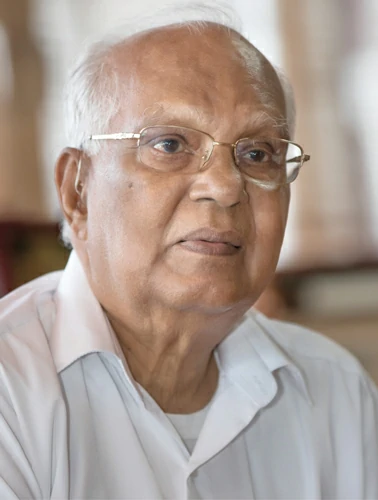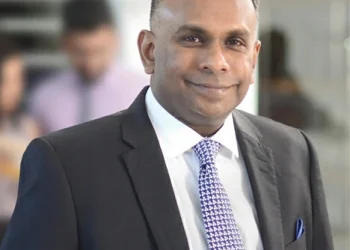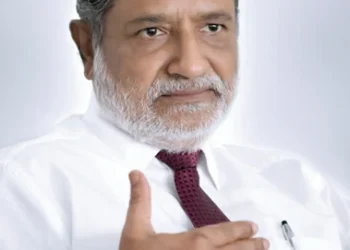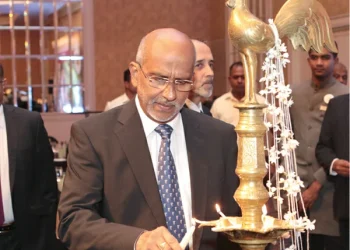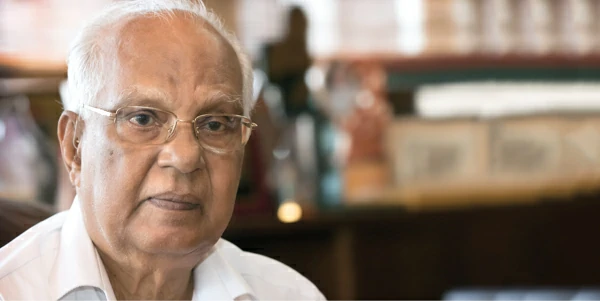
Dr Neville Fernando, the Founder Chairman of the South Asian Institute of Technology and Medicine (SAITM), is a visionary. He has ventured into an area that no one has dared to tread. With the primary aim of giving back to the country he established this higher education institution to provide opportunities to students who are not able to enter state universities. Through Dr Fernando’s initiatives the massive flow of foreign exchange that leaves our country for students’ foreign education has to some extent remained within as there is an impetus of students to study in Sri Lanka. He forges ahead with novel projects that will take Sri Lanka to the world.
By Udeshi Amarasinghe | Photography Mahesh Bandara and Isuru Upeksha
Can you tell us why you decided to establish SAITM?
In 2006, the then Minister of Higher Education Prof Vishwa Warnapala said that out of the 200,000 students that sat the GCE Advance Level examinations 100,000 qualified out of which only 18,000 were accepted by the state system. The rest did not have an alternative. He wanted investors for education. It was a time that I had funds of about 1.6 billion rupees after the sale of Asha Central Hospital. I met with the Minister and sent my request to the University Grants Commission (UGC).
The UGC said that they were not prepared to approve a private university, but I did not want to take no for an answer. Thereafter, I went to the Board of Investment (BOI) and met its Chairman, Dhammika Perera. I submitted my application and received approval from them. But the BOI stipulated a specific requirement, which was that the university had to be affiliated with a reputed foreign university before students could be admitted. We formed a partnership with the famous Nizhny Novgorod State Medical Academy – Russian Federation, after which we received the approval from the Ministry of Health. Health is a devolved subject under the 13th Amendment as such it comes under the purview of the Province. I met with the then Governor of the Western Province Alavi Moulana and obtained approval from him to start the institute.
How important is private education for Sri Lanka considering that only limited numbers get into the universities?
Private education is essential because the government cannot afford to provide higher education to all the students that succeed in their A/Ls. The private sector is the only place that these students can find a solution. That is the reason I started SAITM. The first batch of medical students that entered have passed out with their MBBS qualification from SAITM this year.
Can you tell us about the courses and facilities offered at SAITM? What about the academic staff?
Our academic staff is the best in the country. We have professors for all the subjects. And, all other senior academic staff have postgraduate qualifications in their subjects. Many of them have been employed in the state universities previously. For final year examinations professors from the state sector were also invited as external examiners and they were very satisfied with the students’ standards.
In addition to medicine, we also offer courses in IT and media, business and finance management, and engineering. Engineering is doing exceptionally well. We are affiliated to the Asian Institute of Technology, Thailand. The students study in Sri Lanka for two years and for their final two years they study in Bangkok. They do very well and find employment as soon as they pass out. More than 300 students have qualified in engineering so far.
Private Education Is Essential Because The Government Cannot Afford To Provide Higher Education To All The Students That Succeed In Their A/Ls. The Private Sector Is The Only Place That These Students Can Find A Solution.
For anatomy, under the Faculty of Medicine we will be introducing thiel embalming, which is a soft embalming method that will retain the natural look and feel of the body. This enables the students to learn the anatomy and surgical methods in a more realistic environment. The new system can be used to demonstrate various surgical techniques and is ideal for medical students and for surgeons who want to practice. This is a first for Sri Lanka and SAITM will be an international centre that provides training for surgeons on various surgical methods.
In the Engineering Faculty we have started a tissue culture department; currently they are propagating potatoes, bamboo and other plants.
What about the students? How are they selected and do you have students from overseas as well?
We advertise and students apply. If they want to do medicine they must have passed their Advanced Levels in three subjects; physics or mathematics, chemistry and biology. Our minimum admission requirements are two credits and one simple pass. For international students they too must have equivalent qualifications. We currently have students from the Maldives, Bangladesh and Pakistan.
What about the Dr Neville Fernando Teaching Hospital (NFTH)?
I wanted the design of the hospital to be an aesthetically pleasing one where the patients will have a pleasant environment to get better. The building has arches and reflects Sri Lankan architectural heritage. People look twice at the hospital.
Do Not Give Up Even If There Are Objections. Carry On With What You Want To Do. You Must Have One Aim, One Ambition And One Desire, Then You Come Up To The Point You Want To Be.
We have all the modern facilities at the NFTH. We are different because we provide our services at an affordable rate. Even with the recently imposed VAT on dialysis, we will not be charging the patient but pay that from the hospital.
Can you tell us about yourself?
I am the third in a family of eight. I have two sisters and five brothers all of whom are professionally qualified. This is why I feel that the best gift that parents can give their children is education. We were not rich a family, but a middle class one. However, I have been able to achieve all of this because of my education. I established SAITM because I wanted to give back to the country that has given me so much.
You have been active in politics and stood firm on your beliefs on what is best for the country, can you elaborate on this?
Under the present constitution the leader of the party is supposed to decide on everything, and the ministers and MPs must follow.
There must be a system similar to that of the state council with cabinet ministers and a committee system for land, health and other important areas. The chairman was the minister who took decisions together with the committee. That is why there was a great development drive during the time of the British as well as soon after independence. Even D S Senanayake, the first Prime Minister of Sri Lanka was able to initiate development projects because he was able to make the decisions. However, today the leaders are led by the MPs. If the MPs protest the leaders have to stop what they are doing. I believe we need to go back to the state council system where the committee decides what should be done.
I gave up politics in 1994. I entered parliament in 1977 from the UNP, but due to a disagreement with President J R Jayewardena I had to leave the party. Unlike today, in those days if you left the party you lose your seat in Parliament as well. Before the motion could be taken up for the vote I handed in my resignation to the Secretary General of Parliament and left. The motion is still there.
Subsequently, I joined the Sri Lanka Freedom Party on the invitation of Madam Sirimavo Bandaranaike and was appointed as the Assistant Secretary of the party together with former President Mahinda Rajapaksa. This is why he helped me when establishing SAITM. There were many objections but he asked me to continue with my work. President Maithripala Sirisena, at the time the Minister of Health and then Minister of Education S B Dissanayake, gave me their assistance as well. It is with that cooperation that I was able to come this far. Fortunately, the present government under Prime Minister Ranil Wickremesinghe too have been very supportive of us.
You were also one of the first to start a printing press in Sri Lanka, can you tell us about this aspect as well?
I started a printing press in 1978. When I entered Parliament I was not able to continue with my medical practice as I was engaged in full time politics. Thereafter since I needed an income I decided to venture into printing. I had no experience but I started anyway and fortunately it is today one of the leading printing press’ in Sri Lanka. We have a branch in Dubai and we hope to open a press in Bangladesh as well.
Future plans?
I’m hoping to establish a post-graduate institute with foreign collaboration for both medicine and engineering. We have also commenced the Faculty of Allied Health and Behavioural Sciences. We will offer degrees/diplomas in pharmacology and pharmacy, and also courses for medical representatives. The Dean of this faculty is a senior professor of pharmacology.
I hope to build an apartment complex as my next new venture. The design will be based on our historical sites and include a section to display replicas of sites such as Sigiriya and Dambulla. We also want to utilize the wind power that is generated in such buildings for electricity.
What is your message to all?
Do not give up even if there are objections. Carry on with what you want to do. You must have one aim, one ambition and one desire, then you come up to the point you want to be.
